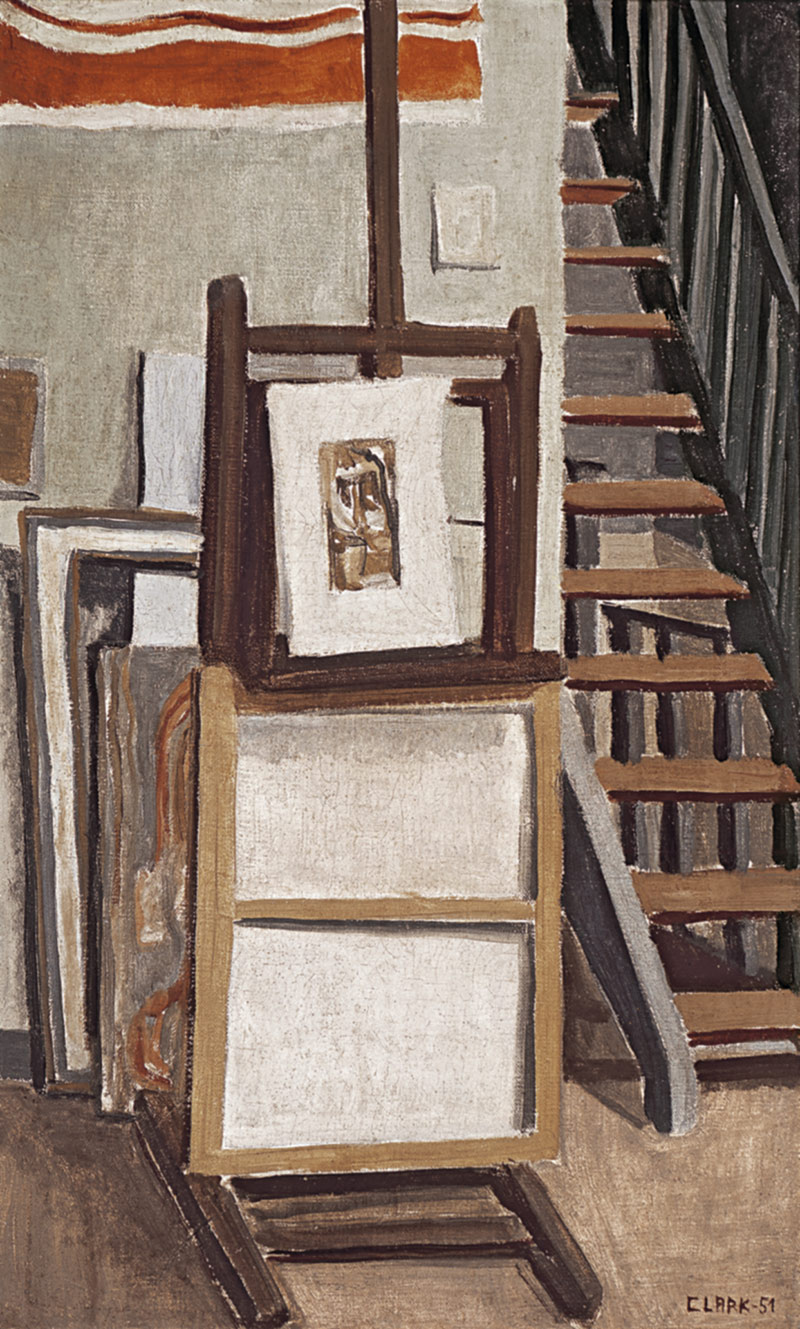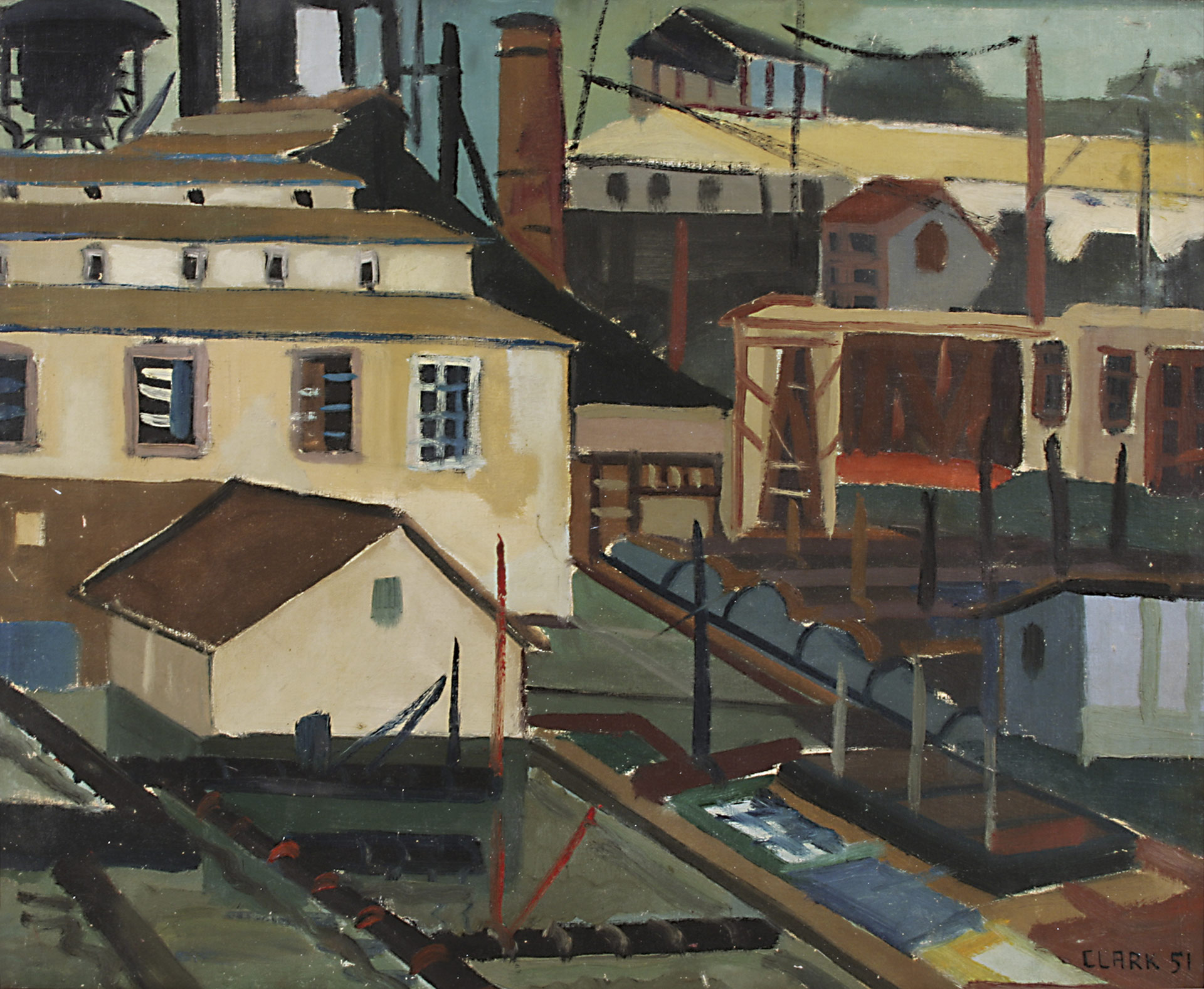The Early Years, 1948–1952
In her early years as an artist, Lygia Clark addressed traditional subjects in charcoal drawings and oil paintings, such as portraiture, still life, the domestic or studio interior, landscape, and architecture. These works illustrate Clark’s early handling of line, form, color, and space, which laid an important artistic foundation for her later works. Clark’s informal training with Brazilian modernists Roberto Burle Marx and Zélia Ferreira Salgado also influenced key elements in her early painting, such as vernacular color, stylized form, and flattened space.
Clark’s distinct mode of abstraction continued to develop during the short time she spent in Paris, between 1950 and 1952, when she briefly studied painting with modern masters Fernand Léger and Árpád Szénes, the latter of whom resided as an exile with Maria Helena Vieira da Silva in Rio de Janeiro between 1940 and 1947. Clark’s work from 1952 ranged from architectonic graphite drawings and paintings to chromatic, modular configurations of prismatic geometries and triangular pointed forms. Prior to returning to Rio de Janeiro, Clark had her first solo show at L’Institut Endoplastique in Paris in June 1952, where she most likely exhibited a selection of the works in this section of the exhibition.




